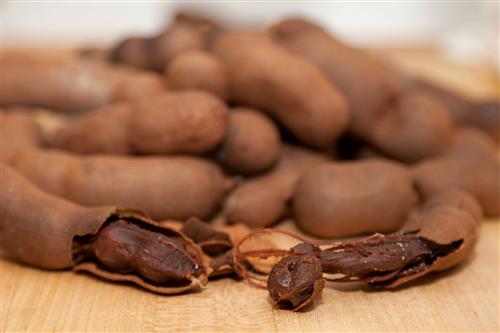Left: Sheetal Rawal, scientist (human genetics) & founder of Apsara Skin Care
By: Marty S.
Home remedies by Sheetal Rawal
Even though hyperpigmentation is typically more common among those with darker skin tones and acne, it can a pain to deal with for anyone who develops it. It would be nice if we didn’t have to be afraid of getting a brown spot on our face every time we walked outside. What else can we do? Stay inside our homes forever and let our skin get pale instead? There must be a better option.
If information is power, then knowing the causes behind hyperpigmentation can be just as powerful as getting rid of it, right? Well, today’s your lucky day! Here are the top 5 causes of hyperpigmentation that you must read if you want to better protect yourself from developing it. Then, continue reading to learn 5 home hacks you can use to fade hyperpigmented areas of skin if you have them currently. Rest assured, all of the remedies found below will take 15 minutes or less; they are easy to use, simple, and great for your skin.
1. Sun Damage
One of the main causes of hyperpigmentation is sun exposure. The pigment of your skin is controlled by cells called melanocytes. When ultraviolet rays and free radicals interact
with those cells, they can cause your melanocytes to overproduce pigment, which causes hyperpigmentation. This happens by either producing an inflammatory response in your skin or by damaging your skin cells. While some are able to get a suntan when they are under the sun, others, unfortunately, find brown spots on their face or other parts of their body. If your skin is likely to darken or discolor when you are in the sun, you may want to consider wearing a hat or avoiding the sun during peak hours.
Saffron & Aloe Vera Mask to Remove Dark Spots Fast
Saffron has been well respected in Ayurveda for its skin brightening properties. Plus, thanks to its polysaccharides and antioxidants, aloe vera can keep your skin healthy and promote the regeneration of skin cells, leading to lighter skin over time.
Ingredients
4 strands of saffron
1 tbsp. of aloe vera juice
Bentonite clay, as needed
Instructions
Place the saffron and aloe vera juice in a bowl. Let it sit until the saffron loses its color in the juice.
To this saffron-infused aloe vera juice, add enough bentonite clay until you get the consistency of thick ketchup.
Apply the paste and leave it on for 10 to 12 minutes.
Wash the mask off with warm water. Follow with a daily skin care routine based on your skin type. Click here to find out what your skin type is.
Use 1 to 2 times a week.
"My skin before had patches, and ever since I started using ROOP, I’ve noticed that the patches have started fading away."
2. Genetics
Another cause of hyperpigmentation is genetics. While you are not born with hyperpigmentation, such as freckles or age spots, on your body, you are more likely to develop it if it runs in your family.
Apple Cider Vinegar Remedy to Reduce Hyperpigmentation
The alpha hydroxy acids - such as malic acid - in apple cider vinegar can gently exfoliate dead skin cells and lighten dark spots as well as hyperpigmented areas of skin.
Ingredients
1 tsp. of ACV (apple cider vinegar)
6 drops of potato juice
6 drops of vegetable glycerin
1 tsp. of aloe vera gel
Instructions
Mix the ingredients together.
Apply and massage your skin for 2 to 3 minutes. Leave the mix on for 12 minutes.
Wash it off with warm water. Follow with your daily skin care routine.
Use 1 to 2 times a week.
If you need another remedy for dark spots and/or hyperpigmentation, watch this video to learn how with saffron and oat flour.
3. Hormones
A special form of hyperpigmentation is melasma. Melasma and hyperpigmentation both create dark or discolored marks on your skin. What makes them different is that melasma typically affects your face. Plus, melasma affects women more than men. This is because the biggest causes of melasma include pregnancy, hormonal imbalances, and birth control pills. In fact, melasma used to be known as the “mask of pregnancy” because of how common it is for pregnant women. If you are on medication and you have been noticing brown spots on your skin, you may want to talk to your doctor about this issue.
Pineapple & Vitamin E Paste to Fade Melasma
Pineapple contains an enzyme called bromelain, which is known to exfoliate the skin, reduce inflammation, and fade signs of hyperpigmentation such as melasma and dark spots.
Ingredients
½ tsp. of ripe pineapple puree
½ tsp. of Vitamin E oil
Oat flour, as needed
Instructions
Mix the pineapple puree with the Vitamin E oil. Add enough oat flour to the mixture until you get a paste.
Apply and leave the paste on for 10 to 12 minutes.
Wash it off with warm water. Then, use your toner, serum, and lotion.
Use 1 to 2 times a week.
4. Inflammation
Another form of hyperpigmentation is called post-inflammatory inflammation (PIH). Although PIH is normally associated with acne and acne scars, it can occur when you have an injury or wound that causes inflammation; the melanocytes in your skin produce an excess amount of melanin over the afflicted area, causing the skin to get darker and/or more discolored. PIH can persist even if the inflammation has been resolved. This is yet another reason to not pick at your skin if you have acne or blackheads; you may be causing your own skin to discolor.
Tamarind Paste for Even, Glowing Skin
The tartaric acid extracted from tamarind can do wonders for your skin, including
exfoliation and keeping your skin fresh and clear.
Ingredients
¼ tsp. of tamarind paste





1 comment
I have melasma on my face so can u suggest any cream to reduce it thanks